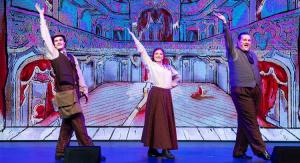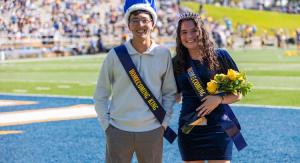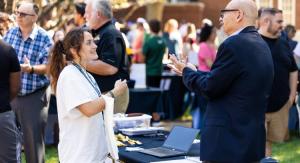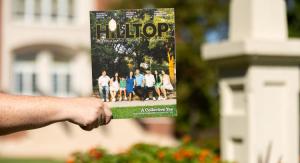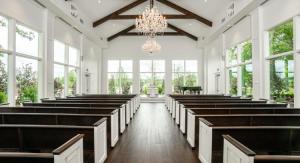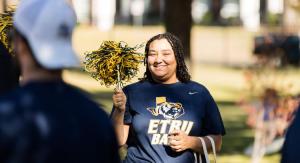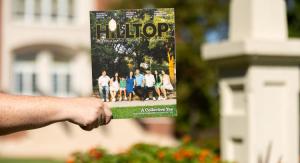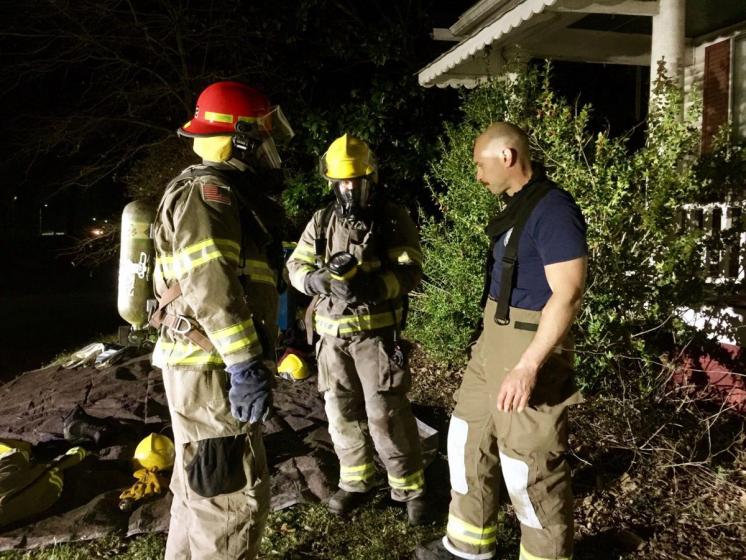
February 20, 2017
MNM, Bridget Ortigo
Most people have heard the old saying about how you can't understand what others go through until you've walked a mile in their shoes and I've always felt that was a pretty accurate sentiment.
Much to my chagrin, I wasn't even able to crawl a few feet in the shoes of Marshall firefighters this week, much less make it anywhere close to a mile in them.
I've always had a deep respect for first responders and their willingness to continually put their lives on the line for people they've never met, but respecting what someone does doesn't necessarily mean you understand what they go through.
This is not to suggest that my brief experience running a drill with firefighters gives me a full understanding of the scope of their job and duties, but it did provide me with an eye-opening, tiny glimpse.
The training
Marshall Fire Chief Reggie Cooper, Assistant Chief Joey Hudson and Battalion Chief David Dean gave me the opportunity to run through a training drill with Marshall firefighters as they spent the week training at a temporary facility on loan from East Texas Baptist University.
The department's firefighters are training all week at the house, which is owned by the university and set to be razed soon, at 507 Hawley Road in Marshall.
Dean approached ETBU officials including President Blair Blackburn for access to the two-story wood frame home since it would allow his firefighters more of a real life training experience and the university readily agreed.
"We have a lot of young firefighters in the department so training like this, in a real life environment is invaluable," Dean said Wednesday. "We have metal cargo container training facilities that Chief Hudson is working to modify right now, located behind our central fire station, but there is only so much you can do in those facilities. Having so many new firefighters like we do, we need to get them as much experience as close to real life as possible."
In ETBU's house, firefighters can run drills through each room and floor, searching for "victims," busting through windows and starting contained and controlled fires in certain rooms.
"We are grateful for the firemen who serve our Marshall community," Blackburn said Thursday. "In partnership with Chief Dean, ETBU offered the use of one of our vacant, off-campus homes to support personnel training in a simulated live fire event. We plan to raze this home in the next couple of months, and thought it would be an excellent opportunity for professional development for our firemen."
On Wednesday, after signing the appropriate paperwork assuring the city I wouldn't hold them responsible if I hurt myself, which sets an exciting mood for what's to come, I got fitted with all of the gear a firefighter wears when responding to a fire call.
I was given fire resistive pants with suspenders and the accompanying jacket, gloves, boots, a hood, a mask, a self contained breathing apparatus with the compressed air tank and a helmet.
I tried the gear on at the central station and then separately tried out the mask and compressed air breathing apparatus. I felt I was good to go and was determined to make a good showing for women since Marshall Fire Department has never had a female firefighter, Dean said.
Instead, I left the door wide open, so to speak, for another female to come in and "make women proud" since I went into a mini-panic/asthma attack after crawling about two feet into the house during the drill.
It turns out, all of that "bunker gear" as it's referred to, weighs a lot. Dean didn't have an exact amount of the full weight of a firefighter's complete gear but I'm going to estimate somewhere in the 40 pound range, at least.
Dean wanted to give me the full experience so he had me dress out in the gear inside one of the fire trucks - no easy feat.
Once dressed out, it was time to put on the hood, mask, compressed air tank, helmet and gloves.
Turns out, once I had on all of the gear plus the mask, claustrophobic feelings that I've never before experienced started to kick in, leaving me feeling a little dizzy and a lot anxious.
Good thing I was surrounded by certified paramedics since Marshall Fire Department trains all of its firefighters to become certified paramedics as well.
I tried to remind myself that I could breathe and if need be, I could be out of all the gear in less than a minute, even though it took me about 30 minutes to get it all on. Dean said firefighters are expected to dress out in full gear in less than two minutes, which boggles my mind.
Determined to continue on and brave it out, I approached the house and listened as Captain Phillip Burnett explained the single room extinguishment drill to me that we were about to attempt.
I was to crawl in the house while holding the nozzle of the fire hose, heading towards the back room where a blinking red light had been set up to serve as our mock fire. The light was used instead of an actual contained fire in a metal trash can as previous planned in an effort to not trigger my asthma.
Captain Burnett was going to serve as the "second on the line" and carry the hose while crawling behind me, except I couldn't quite grasp the hose nozzle with my stiff, new, men-sized gloves so I ended up as the "second on the line" with Burnett in the lead and Firefighter First Class Adam Rennick following behind me.
Only, once we began to crawl into the house, the weight of all that gear started to press in on me like I was 100 feet underwater and I couldn't seem to get a good, deep breath.
My previous feeling of slight claustrophobia and panic exploded into full-on panic, triggering asthma attack symptoms and I had to call an immediate halt to the drill. (Sorry fellow women.)
The firefighters led me out onto the porch where Dean hurriedly helped me get the mask off. Once I took in that first fresh breath of unimpeded air, I started to calm, and then felt more than a little embarrassed.
Burnett and Rennick were good enough to finish the drill for me while explaining what they were doing.
"We run the back of our hand over the door first to feel if it's hot," Burnett said. "Then we get off to the side and push the door open and we crawl in because heat rises so it is much cooler on the floor than if we were to stand up in the room."
When he says much cooler, he really means "a lot" cooler.
Dean said on the floor of a house that's on fire, the temperature could run about 300 degrees while if a firefighter were to stand up, they'd be facing almost 900 degree temperatures.
"The gear will protect you from the worst of the heat but it still gets hot inside there," he said. "We had a fireman stand up one time and within seconds, the plastic on his helmet began to melt and warp. He instantly could feel the heat."
On Thursday, Burnett was back at the ETBU house doing VEIS (vent, enter, isolate and search) drills with about 10 of his fellow firefighters on C shift.
"We use search techniques to look for victims in a house fire and then make our way into the room through a window," Burnett said of the drill. "We close the door to isolate the fire or smoke and then search the room, find a victim if there is one and then get out and move onto the next room. Today we were using the ladder and working on the second story, breaking the window to get into the house."
Burnett said practice like this is essential.
"Practice makes perfect," he said. "We try to do a multitude of training, including paramedic training because there are a lot of different aspects to what we do."
While I wasn't able to impress the Marshall firefighters with my skill, other females interested in becoming a firefighter still have the chance.
Though Marshall has never had a female firefighter, Dean said every member of ETBU's softball team once passed the department's physical endurance test used to qualify a potential firefighter.
"We wanted to make sure our physical requirements weren't discriminatory against women," Dean said. "And they were all able to pass the test in the allotted time, which included dragging a 180 pound dummy 50 ft., running bleachers and climbing a ladder."
While I couldn't hack being a Marshall firefighter for five minutes, sounds like the ETBU softball team could probably pull it off but there is no doubt in my mind, what firefighters must endure physically and emotionally is tough.
It definitely takes skill and heart to do what they do and I'm thankful so many of them tackle the job to keep our community safe.


